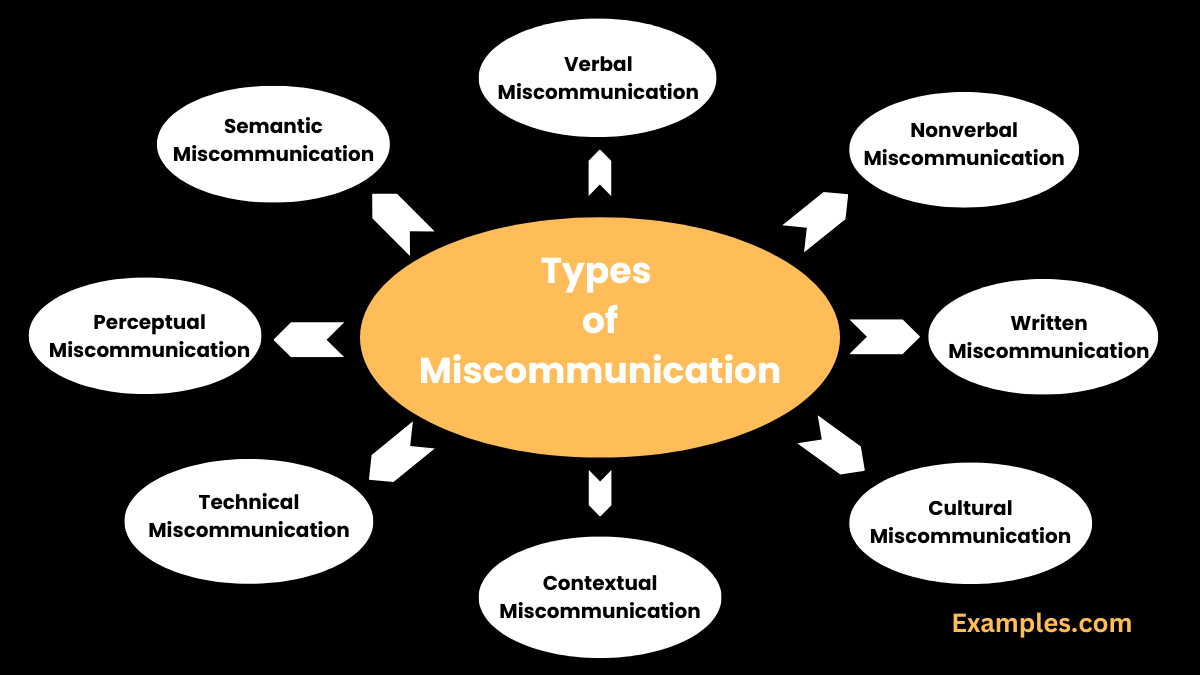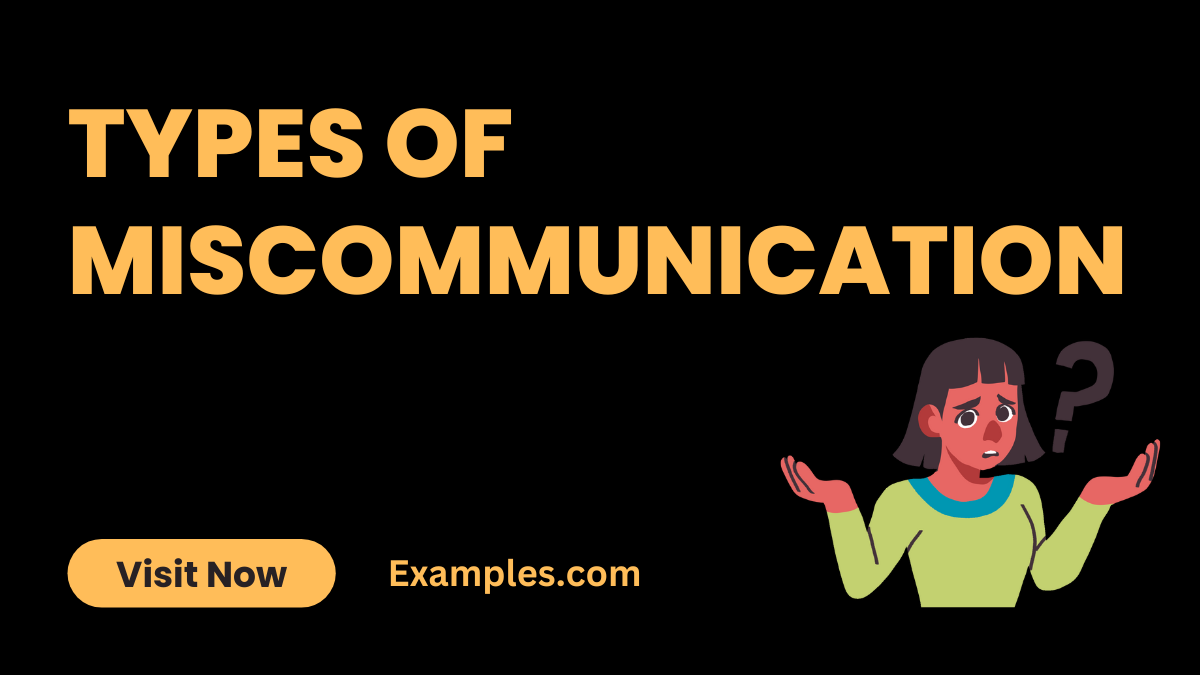Types of Miscommunication – Examples, Types
Miscommunication is a common yet complex issue that can lead to confusion, errors, and strained relationships. This comprehensive guide delves into the various Types of Miscommunication, showcasing real-life examples to highlight how easily messages can become distorted. From verbal misunderstandings to nonverbal cues getting lost in translation, we uncover the nuances of each type. Understanding these examples is crucial for effective communication, whether in personal interactions or professional exchanges. This guide is an essential tool for anyone looking to navigate the intricacies of communication with greater clarity and confidence.
Types of Miscommunication

- Verbal Miscommunication: Often arising from unclear language or tone, verbal miscommunication can lead to misunderstandings.This section explores the root causes of miscommunication. From language barriers to emotional influences, we examine the diverse factors that lead to misunderstandings. Understanding these causes is crucial in preventing miscommunication and fostering clear, effective interactions in both personal and professional contexts. Delve into the complexities behind why communication sometimes fails and learn how to address these challenges effectively.
Example: A manager says “ASAP” for a task, but the employee misunderstands it as end-of-day, not immediate priority. - Nonverbal Miscommunication: Body language and facial expressions sometimes convey unintended messages.Nonverbal cues, including body language and facial expressions, play a crucial role in communication but can sometimes send mixed signals. This segment delves into how nonverbal miscommunication can occur and its effects on interpersonal interactions. We highlight examples of common nonverbal misunderstandings and offer guidance on how to interpret and convey nonverbal signals more effectively.
Example: A nod is interpreted as agreement, but the person was merely acknowledging the speaker. - Written Miscommunication: Emails or texts can be misconstrued without the nuances of spoken language.In our digital age, written communication via emails and texts is ubiquitous but prone to misinterpretation. This part of the article addresses the challenges of conveying tone and intent in written form. We discuss how the absence of vocal cues can lead to misunderstandings and provide strategies for clearer, more empathetic written communication.
Example: A hastily written email is perceived as rude, though no offense was intended. - Cultural Miscommunication: Different cultural backgrounds can lead to differing interpretations.Cultural differences can lead to unique communication challenges. This section explores how varying cultural norms and practices influence the way messages are interpreted. By presenting examples of cultural miscommunication, we aim to foster an understanding of the importance of cultural sensitivity and awareness in our increasingly globalized world.
Example: A thumbs-up gesture is positive in some cultures but offensive in others. - Contextual Miscommunication: Missing context can lead to incorrect assumptions.Context is key in communication. This segment examines scenarios where a lack of context leads to miscommunication. We analyze real-life situations to demonstrate how missing or overlooked contextual information can lead to confusion and misinterpretation, emphasizing the importance of providing complete information.
Example: Discussing a project without mentioning a crucial update, leading to confusion. - Technical Miscommunication: Jargon or technical language can be unclear to non-experts.Technical jargon and industry-specific language can often be a barrier to clear communication. This section highlights the pitfalls of technical miscommunication, especially when communicating with non-experts. We provide examples of how to simplify complex terminology for broader understanding, bridging the gap between experts and laypersons.
Example: A doctor uses medical terminology, but the patient misunderstands the diagnosis.

- Perceptual Miscommunication: Personal biases and perceptions can color interpretations.Perceptual miscommunication arises from individual biases and interpretations. In this part, we explore how personal perceptions and preconceived notions can lead to miscommunication. By examining various instances, we illustrate the importance of open-mindedness and the need to avoid assumptions in communication.
Example: Assuming a colleague’s silence in a meeting is disinterest, rather than contemplation. - Semantic Miscommunication: Similar sounding words with different meanings cause confusion.The English language is rich but can be confusing due to similar-sounding words with different meanings. This section delves into semantic miscommunication, discussing how word choice can lead to misunderstandings. We emphasize the importance of precise language use and the need to clarify meanings when necessary.
Example: Using “affect” instead of “effect” in a report, leading to misinterpretation. - Emotional Miscommunication: Emotions can warp the intended message.Emotions significantly influence how we communicate and interpret messages. This segment examines the role of emotions in miscommunication, highlighting how emotional states can distort the intended message. We discuss strategies to manage emotions for clearer communication and better understanding.
Example: Anxiety during a presentation leads to mixed messages being conveyed. - Listening Miscommunication: Not listening effectively can result in missed or distorted information.Effective listening is as important as speaking in communication. This part focuses on the common issue of listening miscommunication, where failure to listen attentively leads to information being missed or misunderstood. We provide insights into improving listening skills for more effective and accurate communication.
Example: Mishearing a date in a conversation leads to missing an important appointment.

In this guide, we explored the multifaceted world of miscommunication, highlighting its various forms and impacts. From verbal to technical, each type poses unique challenges. Understanding these nuances is crucial for effective communication. Our tips and insights aim to enhance your communication skills, fostering clarity and understanding in all your interactions. This knowledge is invaluable for navigating the complexities of conveying and interpreting messages accurately in every aspect of life.



